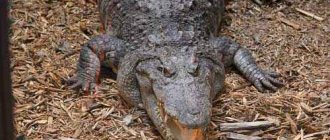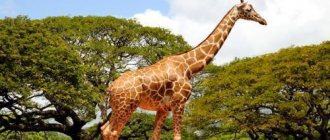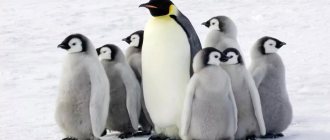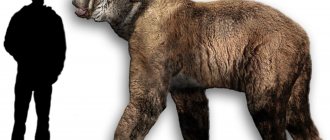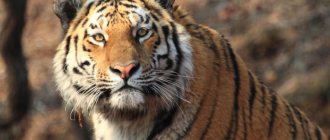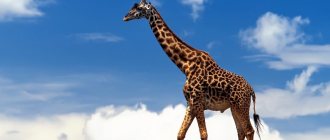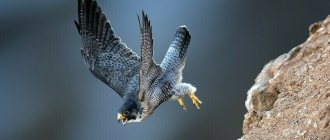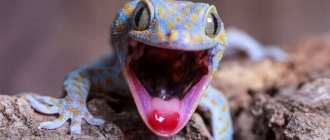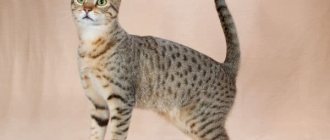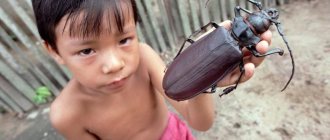For many millions of years, our planet has been inhabited by living beings, changing and adapting to the environment, due to which new species have appeared. Most of these creatures remained in the past, having disappeared from the face of the Earth for some natural reasons long before the advent of man. Such living creatures are also called ancient or prehistoric animals.
flickr/James Loesch
However, many representatives of the animal world managed to survive to this day. Moreover, they were able to preserve their original appearance unchanged, the same as it had been for many, many centuries. Such animals are considered true "living fossils", compared to which Homo sapiens, who appeared only about 200,000 years ago, may well be considered an inexperienced "newcomer".
Coelacanth
Photo: Bruce Henderson
The most ancient, relict animal is the lobe-finned fish coelacanth (coelacanth, coelacanth). Its skeleton and body structure have not changed over the past 400 million years. There are two known species of coelacanth: representatives of the first species live in the seas of southeast Africa, and the second - near the island of Sulawesi (Indonesia). Instead of a hard chord (spine), the coelacanth has an elastic tube, and instead of a skull, a braincase, both halves of which are strengthened with strong muscles. None of the modern animals have such a skull structure. Coelacanth has a unique electrosensory system. Scientists are taking measures to preserve the population of this fish.
Lobster George
In 2009, a lobster named George received the title of the oldest lobster in the world. His age was about 140 years. The lobster was caught in December 2008 off the coast of Newfoundland, Canada. A few days later, the giant animal was sold to the New York City Crab and Seafood restaurant for $100. The lobster got its name thanks to little visitors who happily took pictures with the sea monster.
Lobster George has a difficult fate
A few days later, employees from the animal protection organization PETA (People for the Ethical Treatment of Animals) became aware of George’s fate. They asked the restaurant owners to return the lobster to its natural habitat. The owners agreed, and 10 days after his capture, George returned to his native waters of the Atlantic Ocean. Based on the size and weight of the animal, experts estimated its age to be approximately 140 years.
Another contender for the title of the oldest lobster in the world is 132-year-old Louis. He spent 20 years in the aquarium of Peter's Clam Bar in New York. Butch Yamali, who owns the establishment, has repeatedly received offers from visitors to eat lobster. One day he was offered $1,000 for this. However, the owner decided to pardon the animal and, in a solemn ceremony, Louis was released into the wild.
Neopilina
Photo: biolib.cz
The most ancient cephalopod is neopilina, which lives in great depths (1800–6500 m) of the Atlantic, Indian and Pacific oceans. The age of neopilina is about 350–400 million years. During this time, the appearance of these mollusks has not changed. Neopilina has paired gills, a symmetrical body and a light shell with a diameter of 2 cm. The left and right sides are the same in most modern mollusks, but in neopilina you can easily distinguish the right shell valve from the left.
The most ancient animals in the world
For millions of years, animals have developed, changed, adapted to a changing environment . New species appeared, while others disappeared into oblivion. But evolution did not affect all living beings. Some animals have retained their appearance unchanged, even after many centuries.
Of all insects, ants are considered the most ancient. Their characteristics are almost ideal, so they have existed in almost their original form for millions of years. These animals can safely be called the smartest insects today. Perhaps their "intelligence", as well as strength, omnivorousness and endurance, helped them survive.
Platypuses (Ornithorhynchus anatinus) are one of the most ancient animals. They are classified as mammals, but have similarities with reptiles. Platypuses and echidnas are the only representatives of the order Monotremes. They have existed for about 110 million years. Since those times, platypuses have changed little, except that they have become larger. It is believed that these waterfowl previously inhabited South America, from where they came to their current habitat - Australia.
Echidnas (Tachyglossus aculeatus), also members of the order Monotremes, like platypuses, resemble porcupines in appearance. They have coarse fur and relatively long spines. The animal itself is of medium size, not exceeding 30 cm in length. The echidna family includes three genera, one of which is already extinct. Representatives of the remaining two genera, true echidnas and proechidnas, live in Australia, on the islands of New Guinea and Tasmania, and some small islands in Bass Strait. Like platypuses, echidnas have remained virtually unchanged over the 110 million years of their existence.
Golden spiders (Nephila) are the largest and oldest living spiders. They appeared approximately 165 million years ago. The females of these spiders have long limbs (up to 12 cm) and a body up to 4 cm in length. Males are almost 5 times smaller. In addition to their size, golden weavers are famous for their large and durable golden-colored web. Spiders of this species are found extremely rarely and only in the forests of Tanzania, Madagascar, and South Africa.
Hatteria, or tuatara (Sphenodon punctatus), is a medium-sized reptile, about 75 cm long. Outwardly, it resembles a large iguana. Tautara are small in number and survive only on a few small islands in New Zealand. However, the hatteria, whose appearance has not changed for more than 220 million years, can still be seen in the night forest. This relict reptile, unlike all other reptiles, has retained the parietal eye, which helps it determine the level of light. Interestingly, the hatteria “cohabits” with the petrel. She rests in his hole during the day, and at night, when the owner returns, she crawls away to feed.
Related article Interesting facts about sharks
Shchitni (Triopsidae), despite their impressive history of existence, remain little studied animals. They appeared along with the first dinosaurs, that is, approximately 210-230 million years ago. Modern species of shieldfish have retained their morphology almost unchanged, including. Shields are small in size (3-10 cm), have a strong shell that covers their back, and about 70 pairs of legs. The nauplial eye has also been preserved, the function of which is still unknown.
Horseshoe crabs (Xiphosura) roamed the seafloor approximately 230 million years ago. They can still be found today throughout almost the entire equatorial and tropical zone, as well as in the temperate zone. Horseshoe crabs, which feed on annelids, mollusks and other small bottom inhabitants, have a body length of about 70-90 cm, as well as a durable chitinous shell. The number of these marine arthropods is quite large; in Japan and the USA they are even used to produce fertilizer.
Crocodiles are believed to have appeared about 250 million years ago. They got their name, translated from Greek as “pebble worm,” due to their lumpy, hard skin. These reptiles have changed little since the time of the dinosaurs. By the way, speaking in “human” language, crocodiles are cousins of dinosaurs. And among the animals that exist today, their closest “relatives,” as strange as it may sound, are birds.
Coelacanth (Latimeria chalumnae) is a unique relict animal. It is believed that it has not changed its structure for more than 400 million years. Today, coelacanths, part of the coelacanth group, have a unique structure of the skull, or rather the braincase, which consists of two halves and is connected by a special joint. The arrangement of organs in the coelacanth is also unusual for modern animal species; there are also other features that make it a unique relict animal. In addition, coelacanth has a networked electrosensory system, characteristic only of this species of animal.
One of the first cephalopods on our planet was Neopilina , which still exists today. Presumably this mollusk appeared at least 350-400 million years ago. Evidence that neopilins did not become extinct appeared among specialists in the middle of the 20th century. Their appearance has remained virtually unchanged over this long time: a light-colored shell with a diameter of about 2 cm, paired gills, and a symmetrical two-sided body. Interestingly, neopilina can be distinguished between left and right sides, which is not typical for modern mollusks.
Animals, whose external and internal structure is more perfect than that of other species, may well exist for many years without undergoing significant changes. But only a few species were able to survive to this day, and even retain their original appearance.
PS Download the finished presentation for school “The Most Ancient Animals”
Author: wolchonokW7 Copyright holder: Zooclub portal (www.zooclub.ru) When reprinting this article, an active link to the source is MANDATORY Stock images from Depositphotos
Nautilus
The snail Nautilus pompilius (common manboat) has lived on the planet for more than 500 million years. This mollusk lives at shallow depths (about 400 m) off the coast of Australia, as well as the Philippines, Indonesia and other islands of the Pacific and Indian oceans. There are about 2,500 species of nautilus known in the world. Their shell is rolled into a spiral and contains several compartments: one contains the body, and all the rest serve to move to different depths.
Cyanobacteria
Gram-negative bacteria, which have the ability to photosynthesize and produce oxygen, are considered the most ancient microorganisms on the planet. Their stromatolites, discovered at the bottom of dried up reservoirs, are over 3.5 billion years old. Scientists classify cyanobacteria as eukaryotic algae, and algologists and bacteriologists study them.
Platypuses
Photo: sustainability-times.com
Although platypuses are mammals and belong to the order Monotremes, they have many similarities with reptiles. Their age is 110 million years. During this time, platypuses have not changed, although their body has become slightly larger in size. They live in Australia, but scientists believe that platypuses migrated there from South America. This animal is the only living representative of the platypus family.
Echidna
The Australian echidna (lat. Tachyglossus aculeatus) is another representative (like the platypus) from the order of monotremes.
flickr/crijnfotin
Externally it resembles a porcupine. There are only 3 genera in the echidnova family, one of which is already extinct. The remaining representatives of two genera (prochidnas and true echidnas) inhabit Australia, the islands of New Guinea, Tasmania and some small Bass Islands. Echidnas, like platypuses, have remained virtually the same over the 110 million years of their existence.
Tuatara (tuatara)
Photo: sciencetimes.com
The oldest reptile - tuatara or tuatara - belongs to the ancient order of beak-headed animals. This is a very rare animal found in New Zealand. The hatteria is similar in appearance to an iguana and grows 75 cm in length. It is nocturnal and lives in the same burrow with the petrel. Neighbors don't interfere with each other. When the bird wakes up in the morning and flies away, the reptile hides. Hatteria is the only reptile that has a parietal eye. This animal lives on the planet for about 220 million years.
The oldest parrot on the planet - Charlie
A huge macaw named Charlie was born in 1899. In 2018 he turns 119 years old. Today the bird belongs to Englishman Peter Oram, who acquired it in 1965 as a living decoration for his pet store. Over time, Charlie had to be taken home, as visitors with children complained about the swearing and anti-Nazi insults that the parrot liked to utter.
Charlie the parrot is said to have known Churchill himself
They say that this bird once belonged to Sir Winston Churchill himself - it was he who taught it unpleasant curses. According to some sources, the Prime Minister bought a female macaw in 1937. However, Churchill's daughter denied this information in 2004. She said her family reviewed all of her father's historical records and records, but nothing was found about Charlie. However, the woman confirmed the presence of a parrot in her family in the 30s. However, it was not a macaw, but an African Gray Gray. Some sources claim that the Churchill dynasty denies the living Charlie's connection to the British Prime Minister during World War II, lest anyone think that their ancestor could have taught his pet such terrible phrases as "Fuck Hitler!" and “Fuck Nazis!” Nevertheless, the sounds made by the bird fairly accurately copy the voice of the British leader of the mid-20th century.
Currently, the oldest female macaw lives in Surrey in southern England.
Shchitny
Photo: wp.wiki-wiki.ru
When the single continent of Pangea existed, small gill-footed crustaceans called shieldfish appeared on the planet along with the first dinosaurs. Their age is 210–230 million years. These animals have been studied very little, but it is known that they have not changed over the long period of existence. The shieldfish has 70 pairs of legs, the body is hidden under a strong shell 3–10 cm in diameter. The nauplial (extra) eye is located on the front of the shell. Shields live in bodies of water on all continents except Antarctica. Many aquarists keep shieldfish in home aquariums, which require special equipment.
The Secret of Longevity
Shields owe their vitality to their unique way of life. They live exclusively in temporary bodies of fresh water, such as puddles, ditches and ravines. Each generation of shieldfish buries cysts in the ground, which are embryos covered with a thin membrane. They are resistant to drought and temperature changes, and it takes them a couple of days to hatch. It takes them a couple of days to transform into adults. And as adults, they bury the embryos in the ground again. They feed on almost anything that is smaller than them, so they obviously do not suffer from hunger. As you can see, shieldfish try in every possible way to outwit nature and do not allow themselves to be offended.
Recently, my colleague Lyubov Sokovikova spoke about the secrets of longevity. I recommend that you read her material.
Horseshoe crabs
Photo: www.pbs.org
The oldest representatives of merostomian arthropods, horseshoe crabs, have been living in tropical and equatorial seas for 230 million years. These animals have a strong shield covering their back and a long, sharp spike instead of a tail. Horseshoe crabs grow 70–90 cm in length. Despite their ancient history, the population of horseshoe crabs is quite large.
Hungarian river lamprey
A freshwater jawless creature from the genus of toothed lampreys. The remains of her ancestors were found by scientists from Great Britain in 1997 and date back to 360 million years old. An ancient specimen of lamprey is characterized by the presence of an armored shell, the absence of a jaw and organs that resemble suction cups. Presumably, the creature fed on the blood of large fish or animals like leeches.
Crocodile
Photo: Bradley Feller
The word "crocodile" is Greek for "pebble worm" because its rough skin resembles stones. Surprisingly, the closest modern relatives of crocodiles are birds. Moreover, crocodiles are the closest genetic relatives of dinosaurs (like cousins). The first modern crocodiles appeared 250 million years ago.
elephant shark
Photo: MARINETHEMES.COM/KELVIN AITKIN
The elephant fish, ghost shark, Australian callorhynchus or elephant shark appeared 400 million years ago. These animals live in the seas near Tasmania, New Zealand and southern Australia. They prefer greater depths - up to 500 m. The ghost shark belongs to the subclass of chimeras (whole-headed) and is a relative of seahorses and stingrays. The trunk or nose of this shark helps it search for prey and can replace vision. This shark got its name “ghost” for its color: its silver body is invisible in deep waters, and dark spots on its back help the shark camouflage itself.
Granny (killer whale)
According to scientists, the killer whale was born no later than the 11th year of the twentieth century. The first time she was discovered was among the waters of Puget Sound. By that time, the killer whale had already crossed the threshold of childbearing age and was released into the wild. There are no markings on Granny's body, however, she is easily recognized by the rare scar on her fin. The killer whale was last seen in the fall of 2016, which suggests its death.
Sponges
Photo: dkfindout.com
Sponges have lived on the planet for more than 600 million years. This is evidenced by the results of scientific research. Sponges secrete a special substance, the oldest remains of which date back to the end of the Proterozoic glaciation. These marine animals lead a sedentary lifestyle, attaching themselves to the seabed or plants. Sponges filter water and find nutrients in it.
Alligator Muje
The oldest Mississippi alligator lives in a Serbian zoo. His name is Muja. According to experts, the animal’s age exceeds 80 years. In 1937, a couple of years before the outbreak of World War II, the reptile was transported from Germany to Belgrade. At that time he had already reached puberty. In its new location, the animal survived three severe attacks by German military forces and the Balkan crisis of the 90s of the last century.
Muje the alligator survived the war
In 1941 and 1944, severe aerial bombings took place, as a result of which almost all the animals in the zoo died. Muje was not injured in any of them. Throughout his life he enjoyed good health and did not require medical care. Only in 2012, the right front paw was amputated due to the treatment of gangrene that had formed.
The next oldest crocodiles in captivity was the alligator Kabulitis, who lived at the Riga Zoo in Latvia until 2007. He died of natural causes at the age of 75.
Ctenophores
Coeloplana astericola (order Platyctenida) on the surface of a starfish (Photo: Nick Hobgood)
About 700 million years ago, ctenophores appeared on the planet. According to other sources, the first representatives of these animals appeared in the Cambrian period. These marine inhabitants are very numerous and live in all seas and oceans. Ctenophores move using thin cilia that resemble combs. Most ctenophores are predators, although some are parasitic on salpids.
Golden spider
The golden spider (lat. Nephila) is the most ancient spider living on Earth.
flickr/Clicksy
These arthropods appeared on our planet about 165 million years ago. They became famous thanks to their strong and large golden web. The golden weaver is a resident of Australia, Asia, Africa, Madagascar and America.
Cockroaches
Photo: rentokil.co.uk
Cockroaches have lived on earth for 320 million years. Their population has always been extremely numerous. From Paleozoic times to the present day, many remains of ancient cockroaches have been preserved - more than all other insects.
Most of the most ancient animals are on the verge of extinction and need to be preserved. Ecologists and scientists around the world strive to preserve unique representatives of ancient fauna.
Ants
Ants (lat. Formicidae) are considered the most ancient creatures living on Earth - about 130 million years old.
flickr/Haentjens Raphaël – Macropixels
These insects have managed to survive to this day, practically retaining their original appearance. In addition, ants are also considered one of the smartest and strongest animals on the planet. Probably, such extraordinary abilities allowed the ants to survive.
